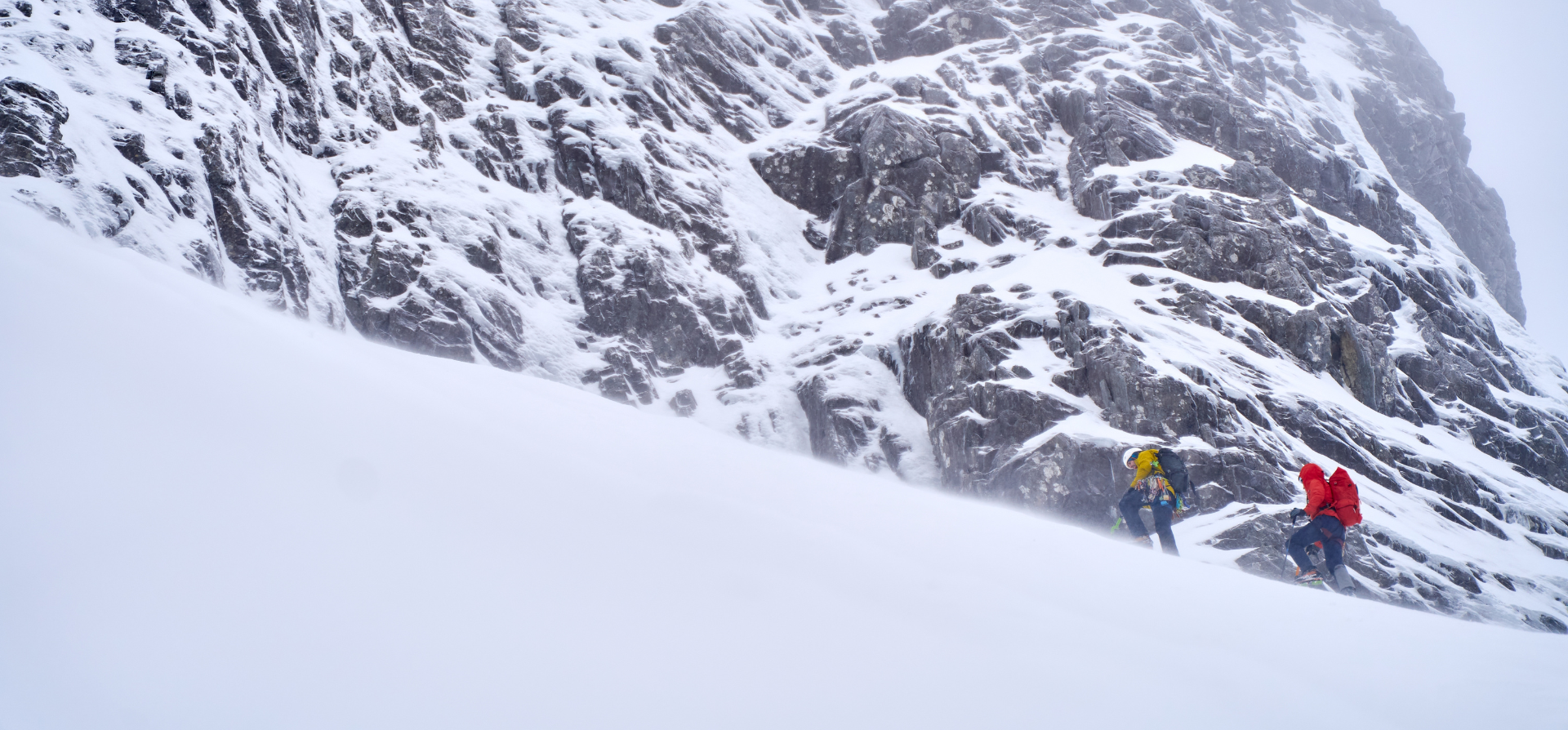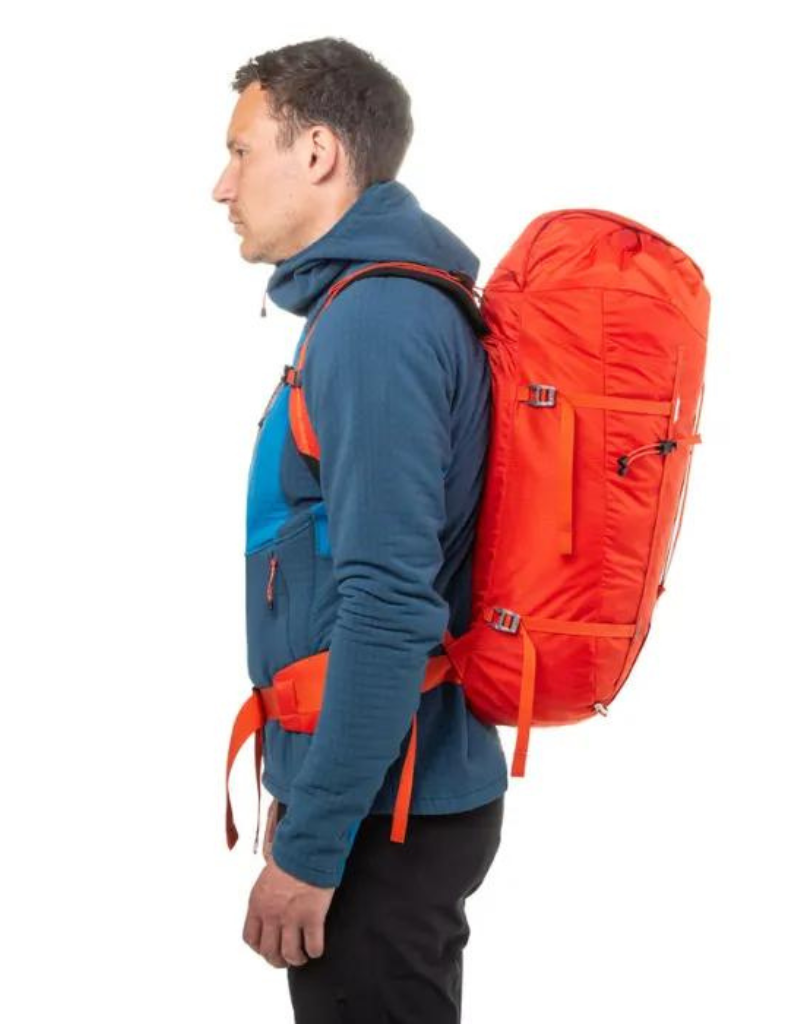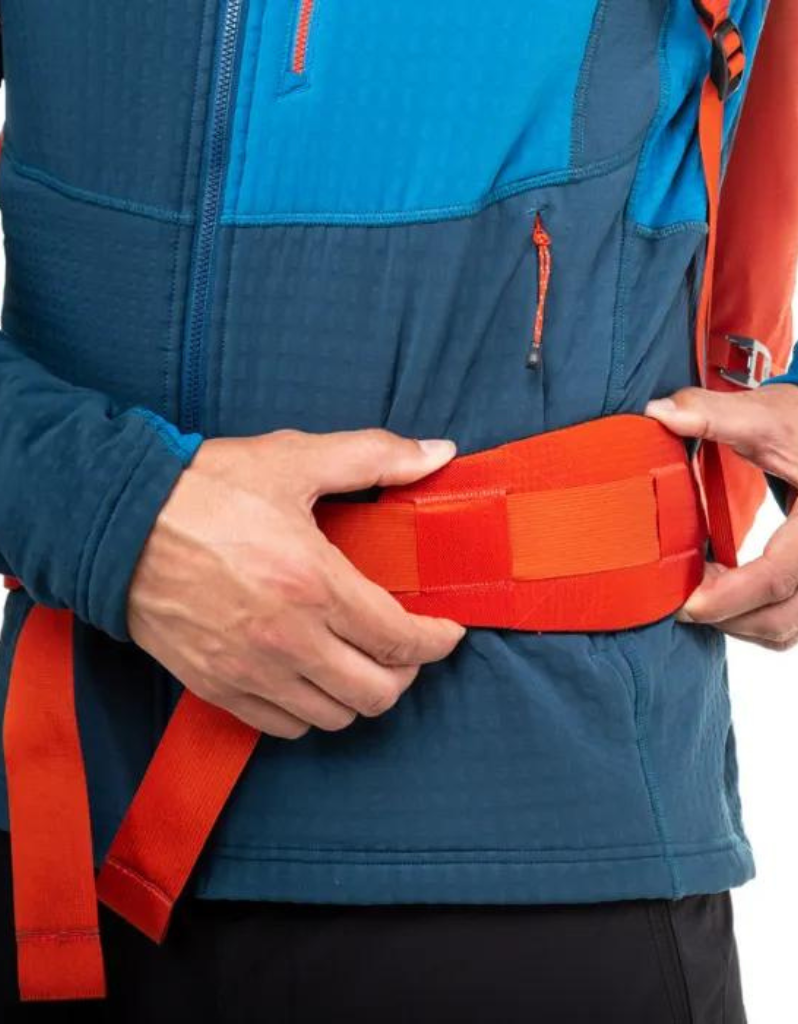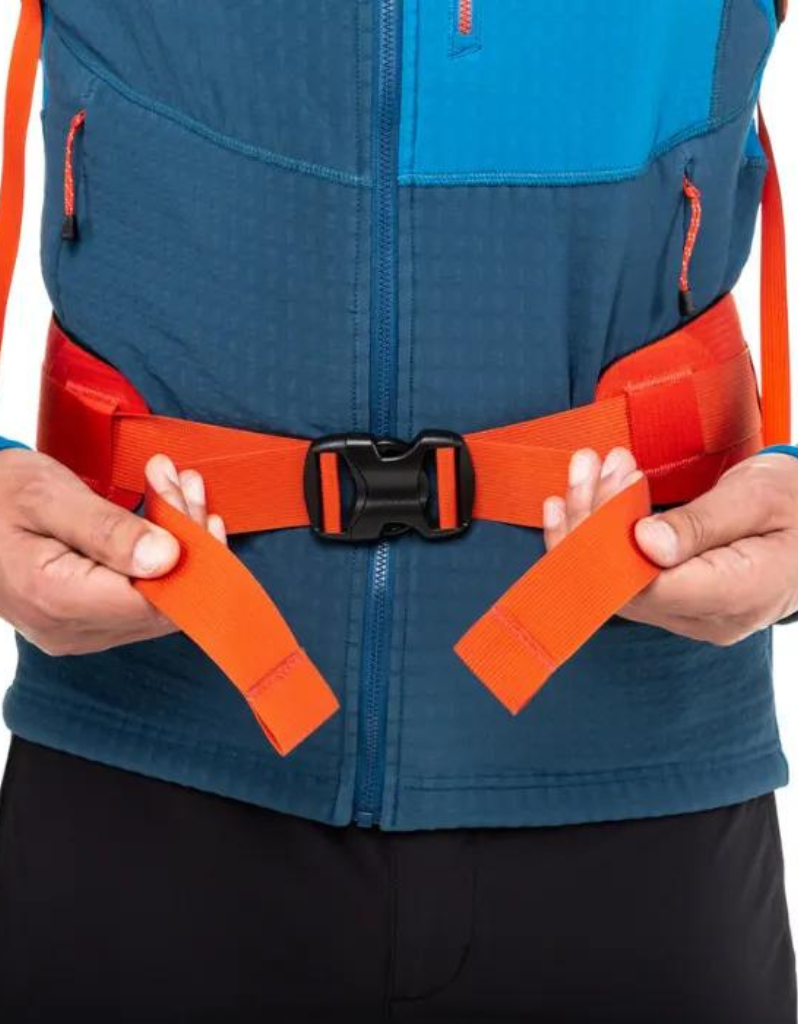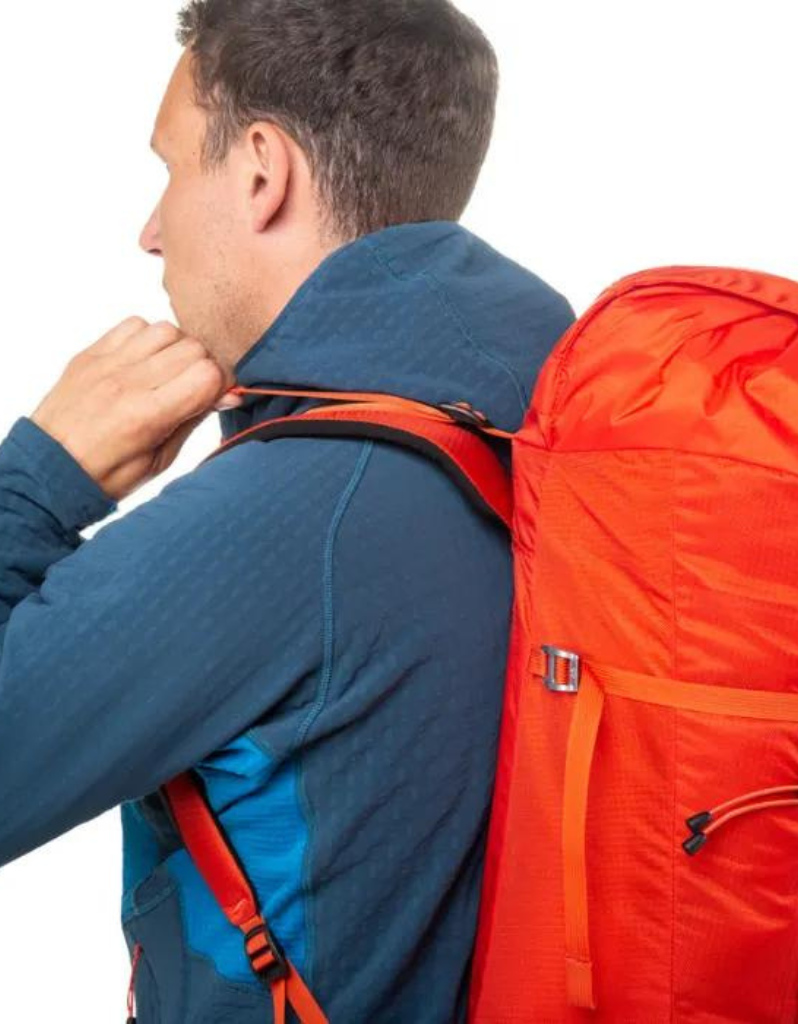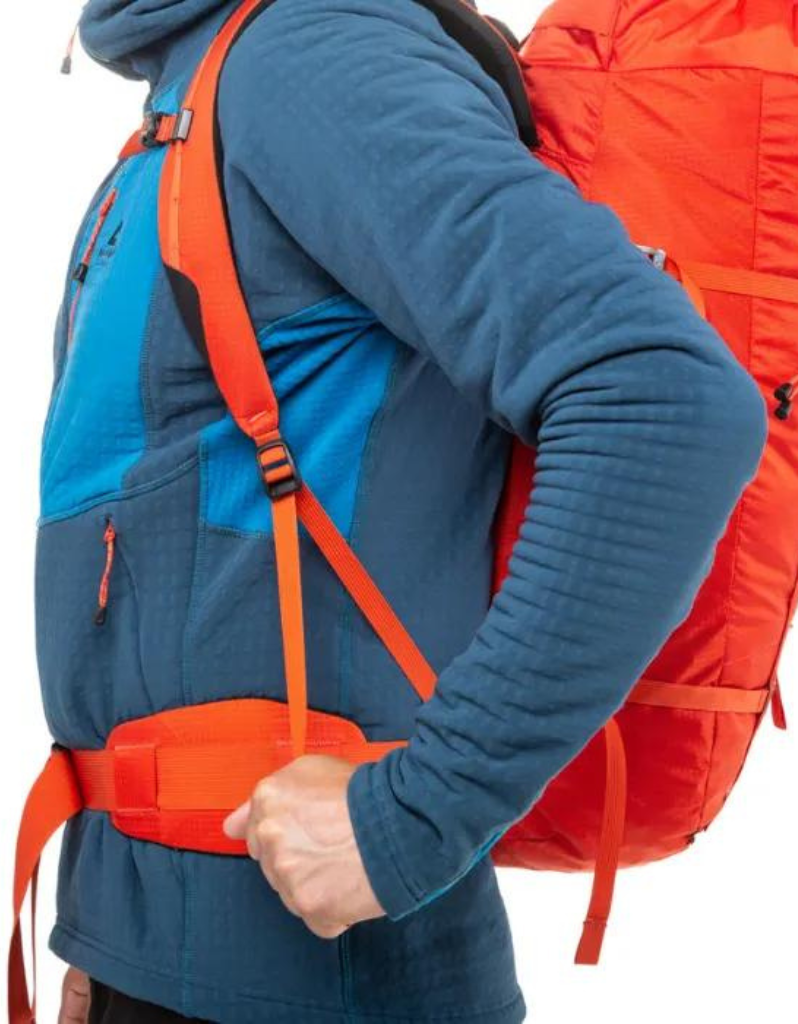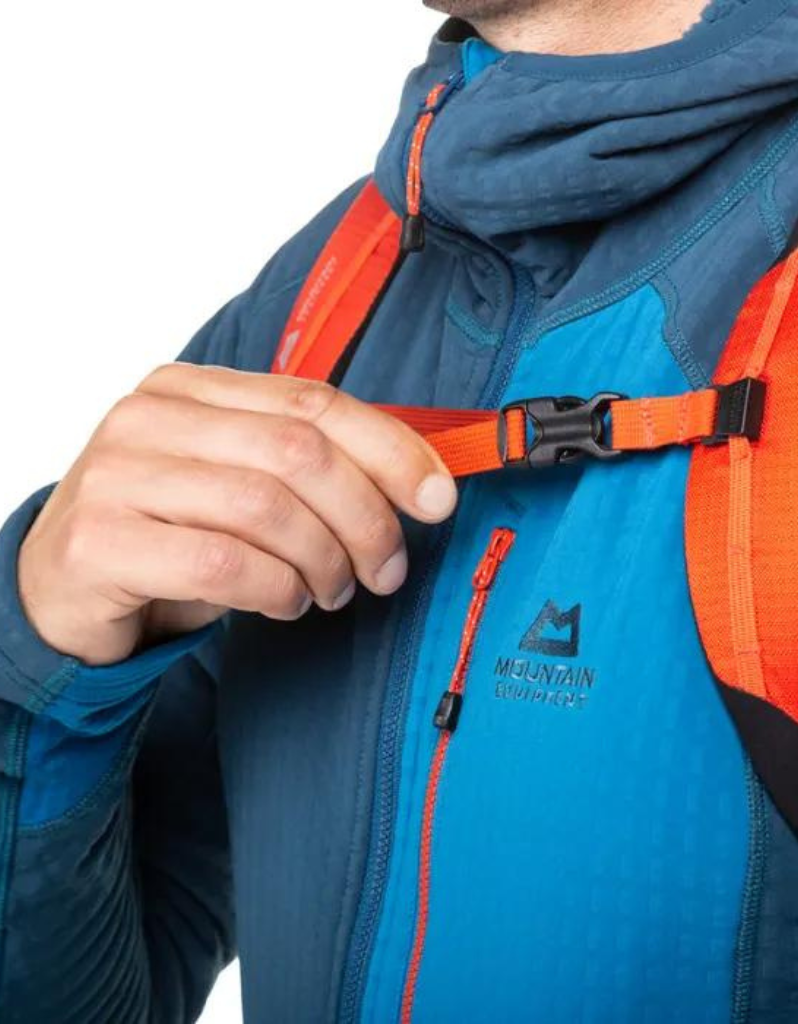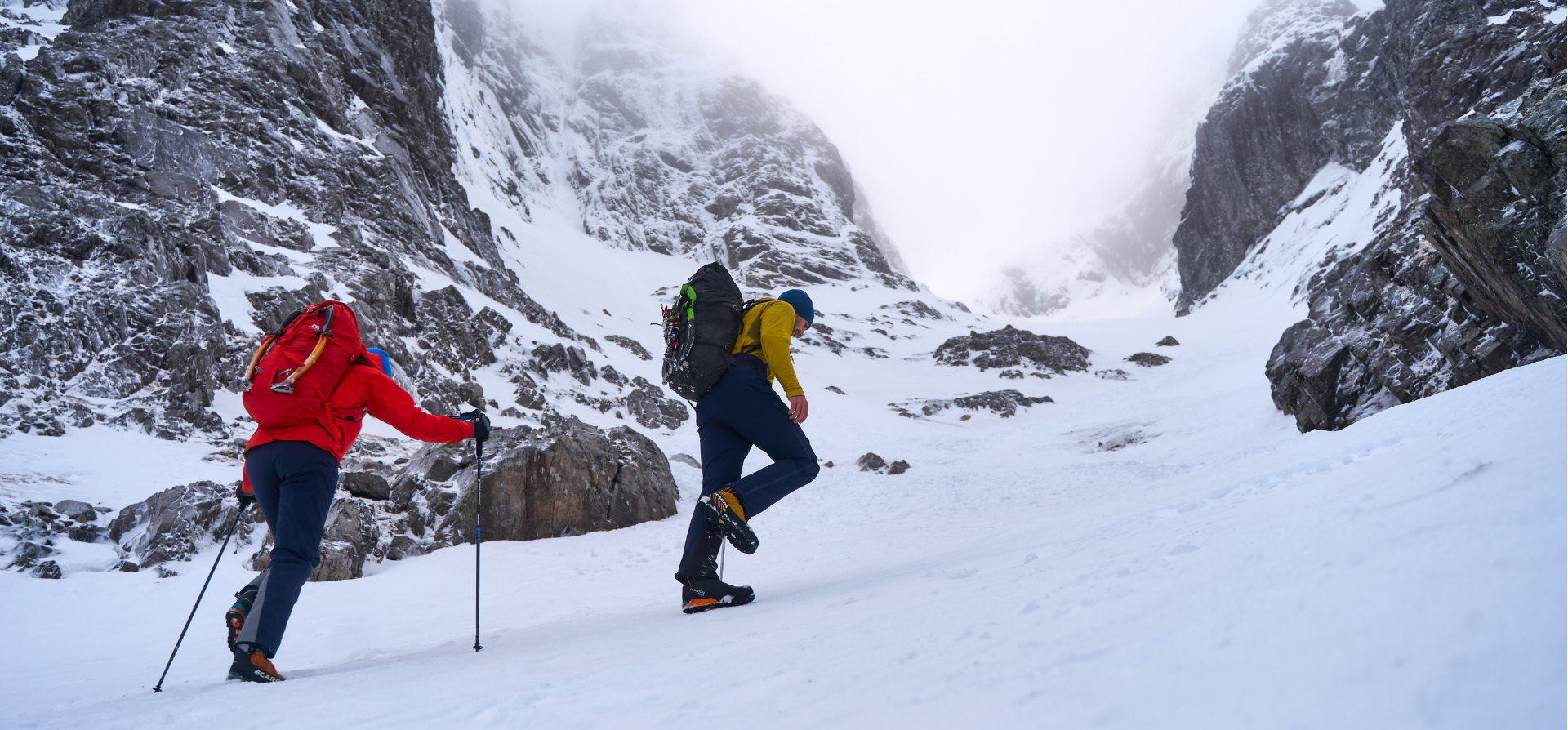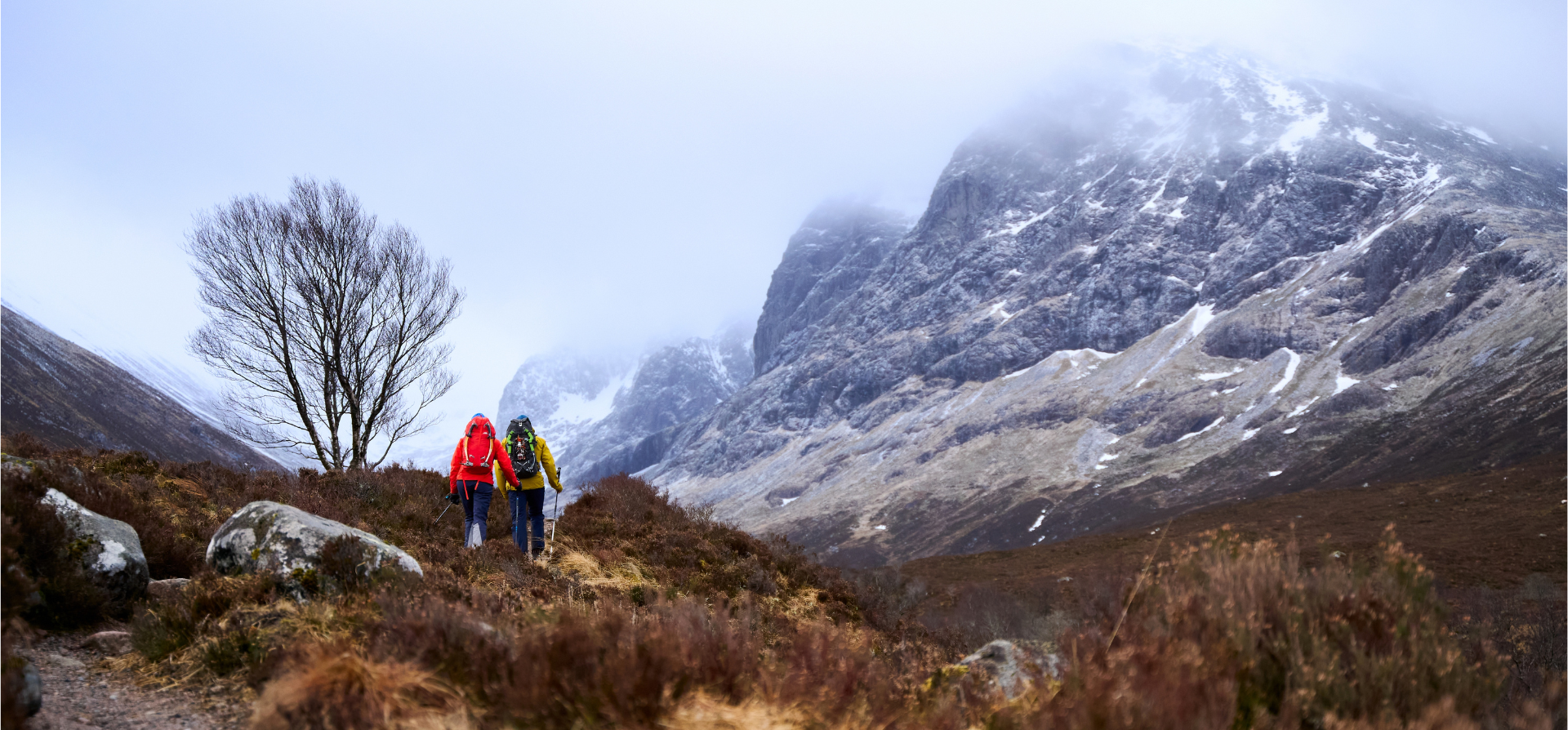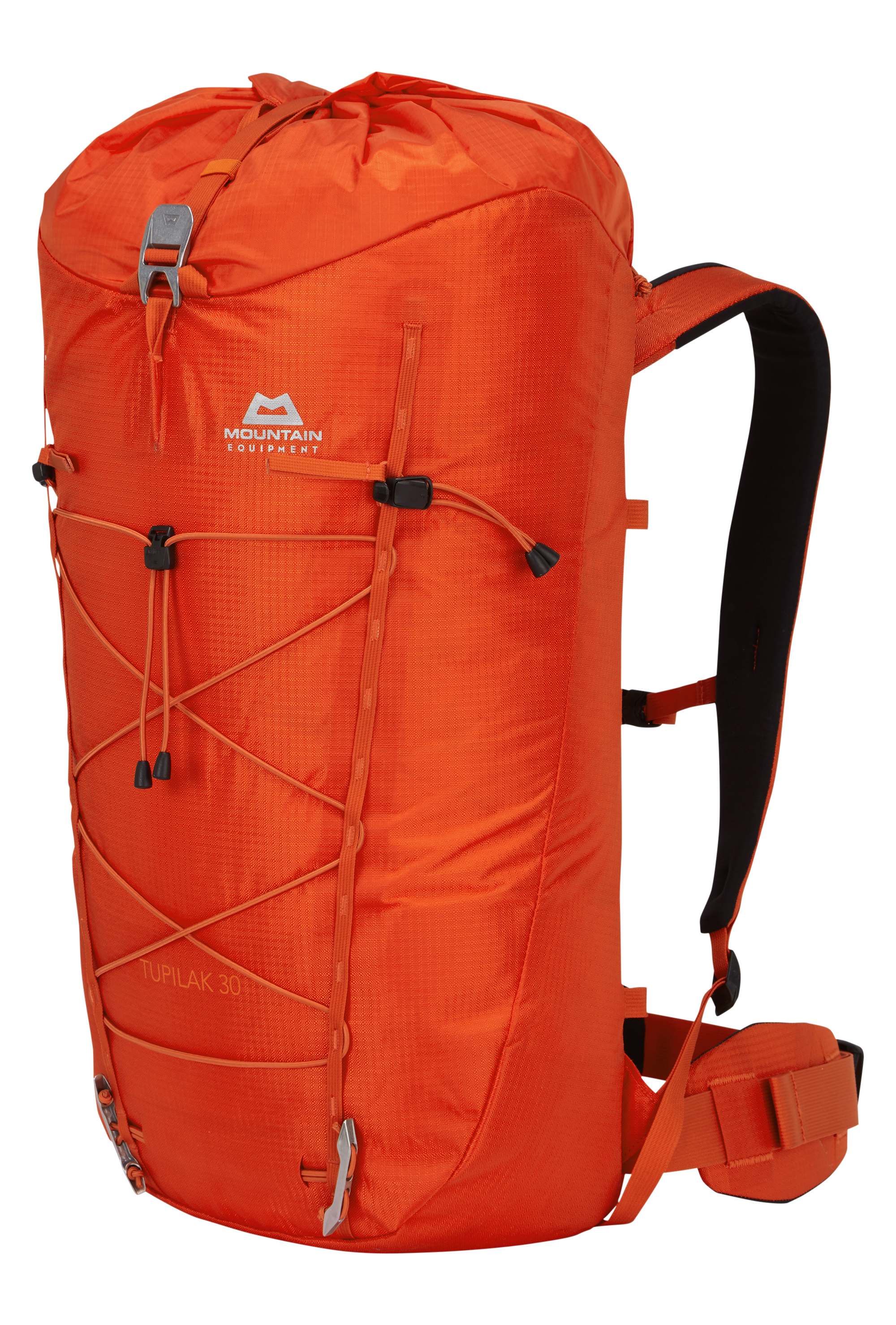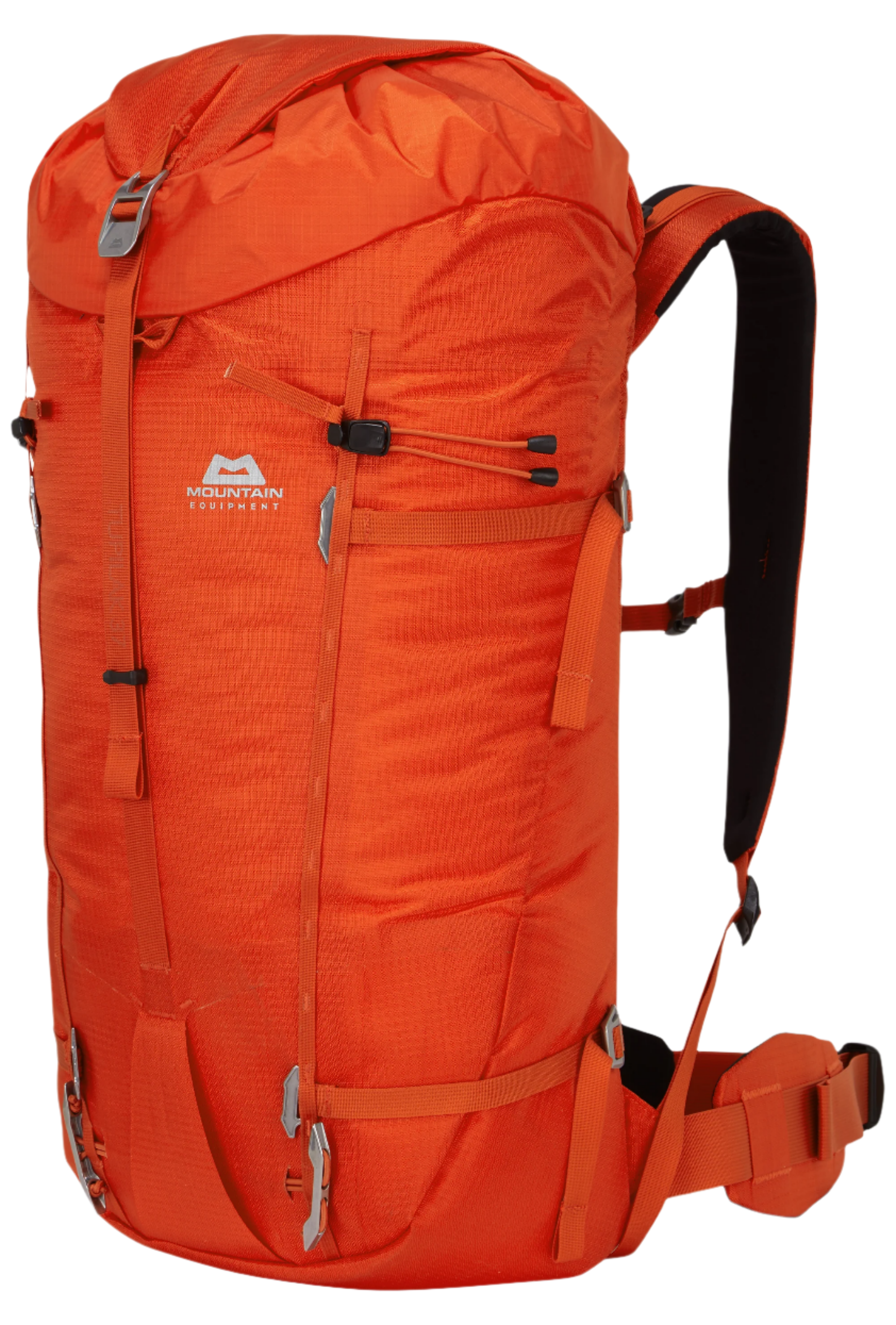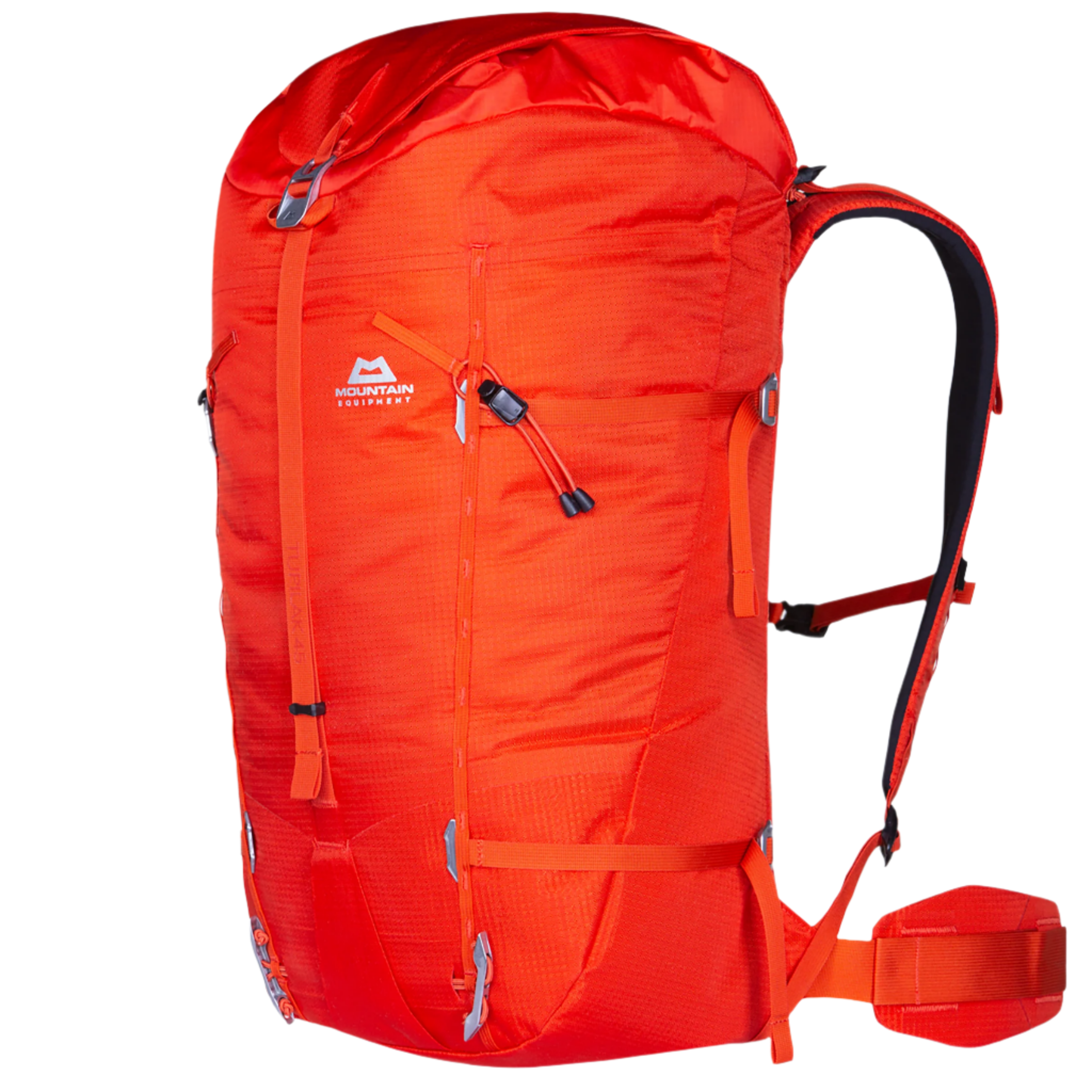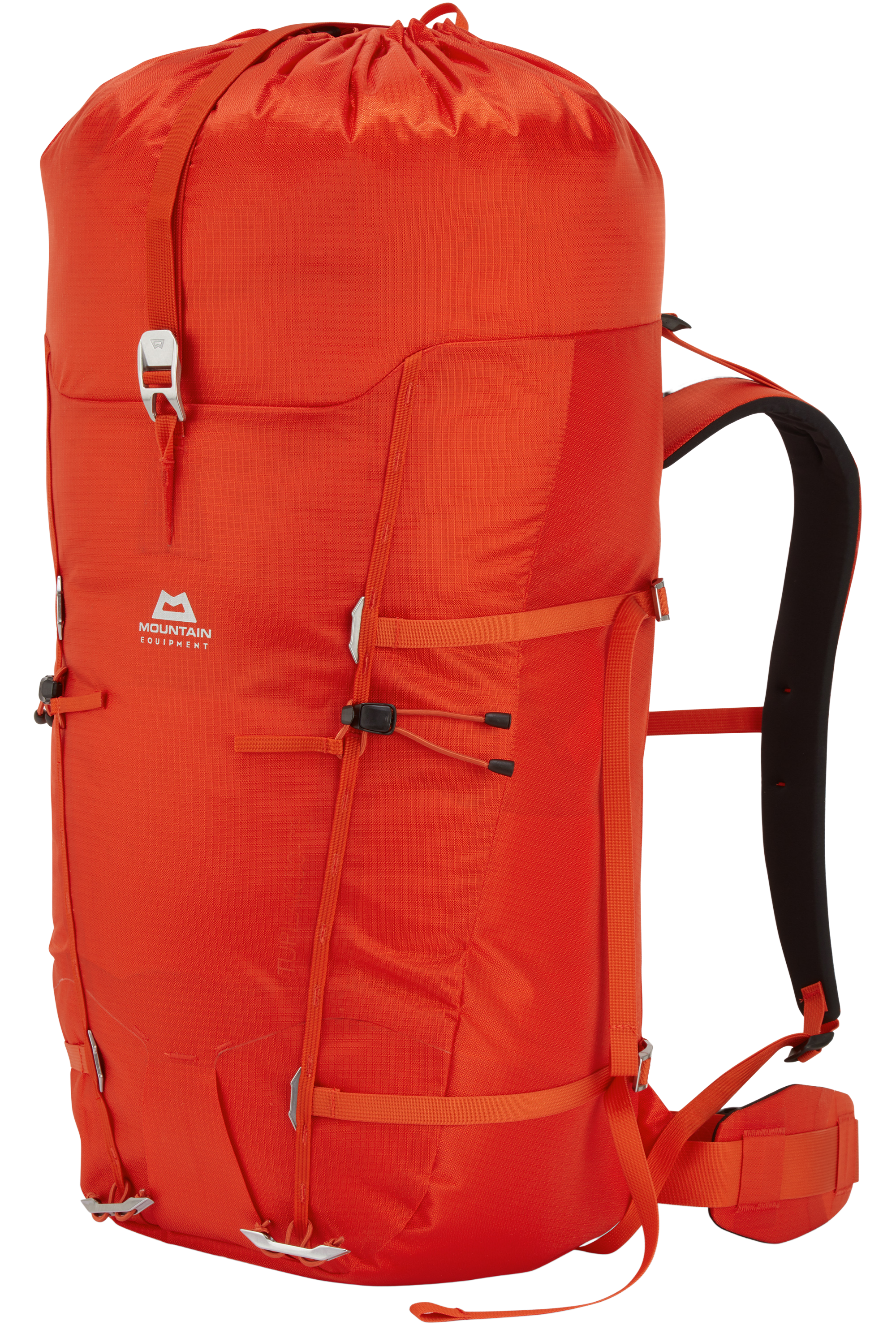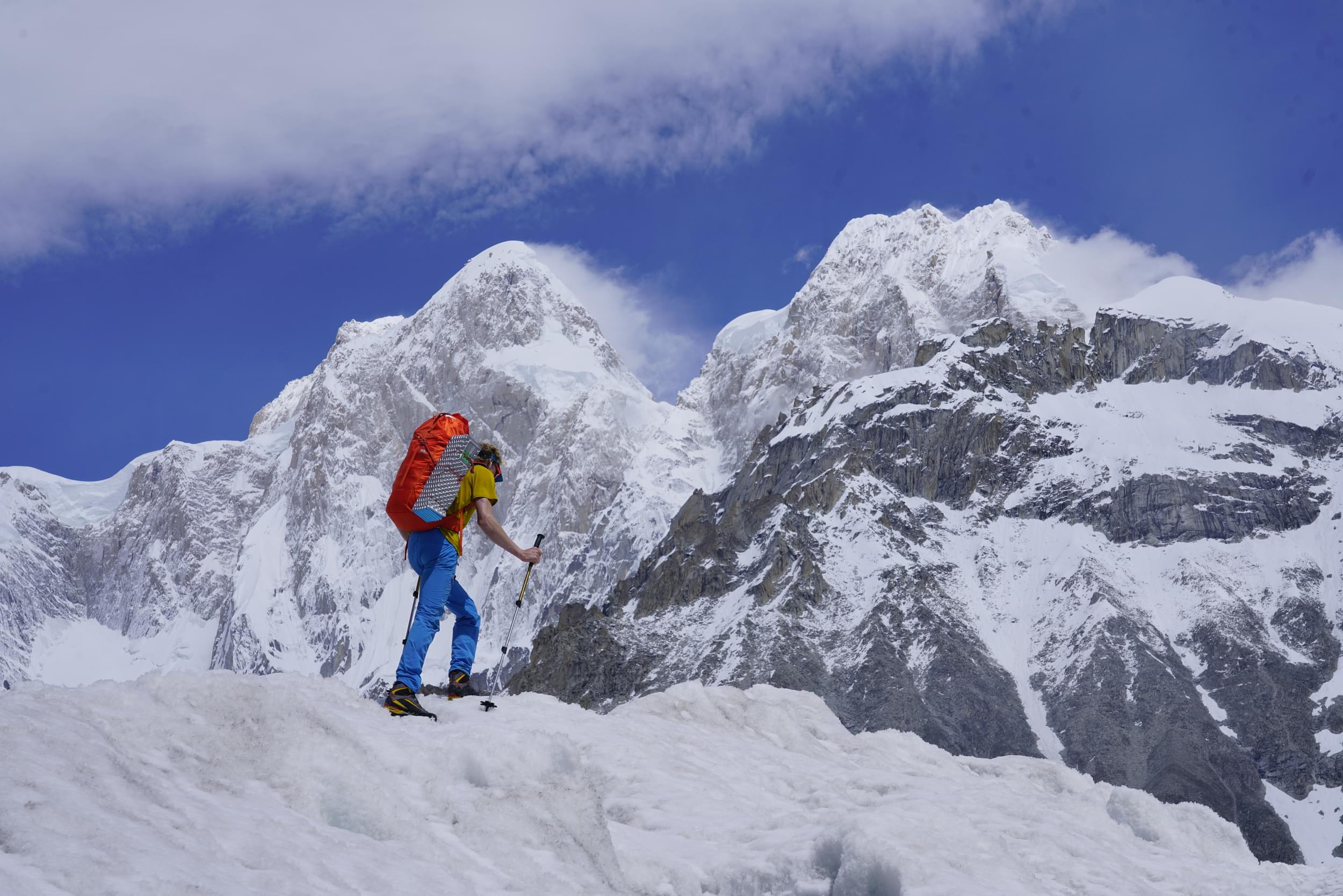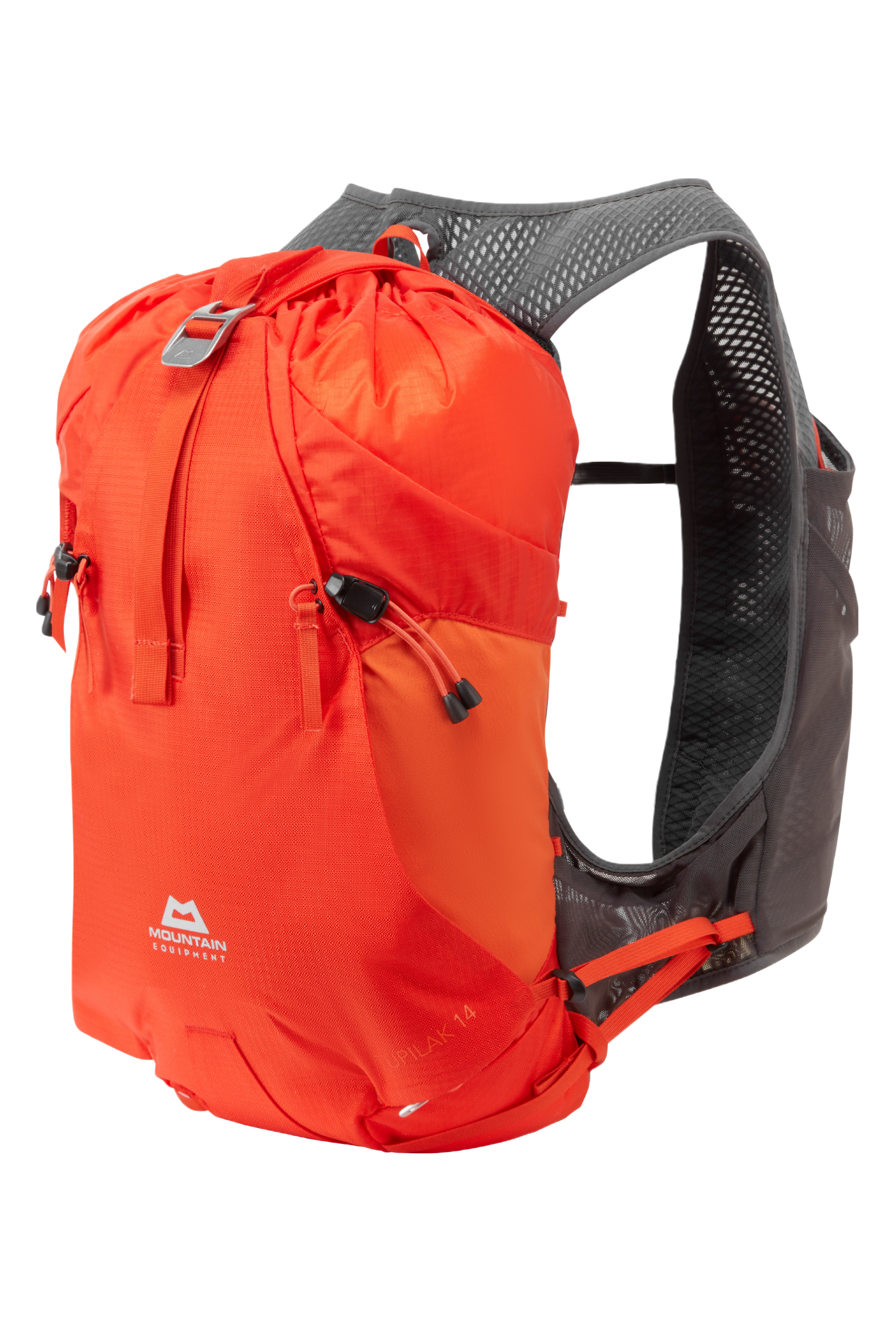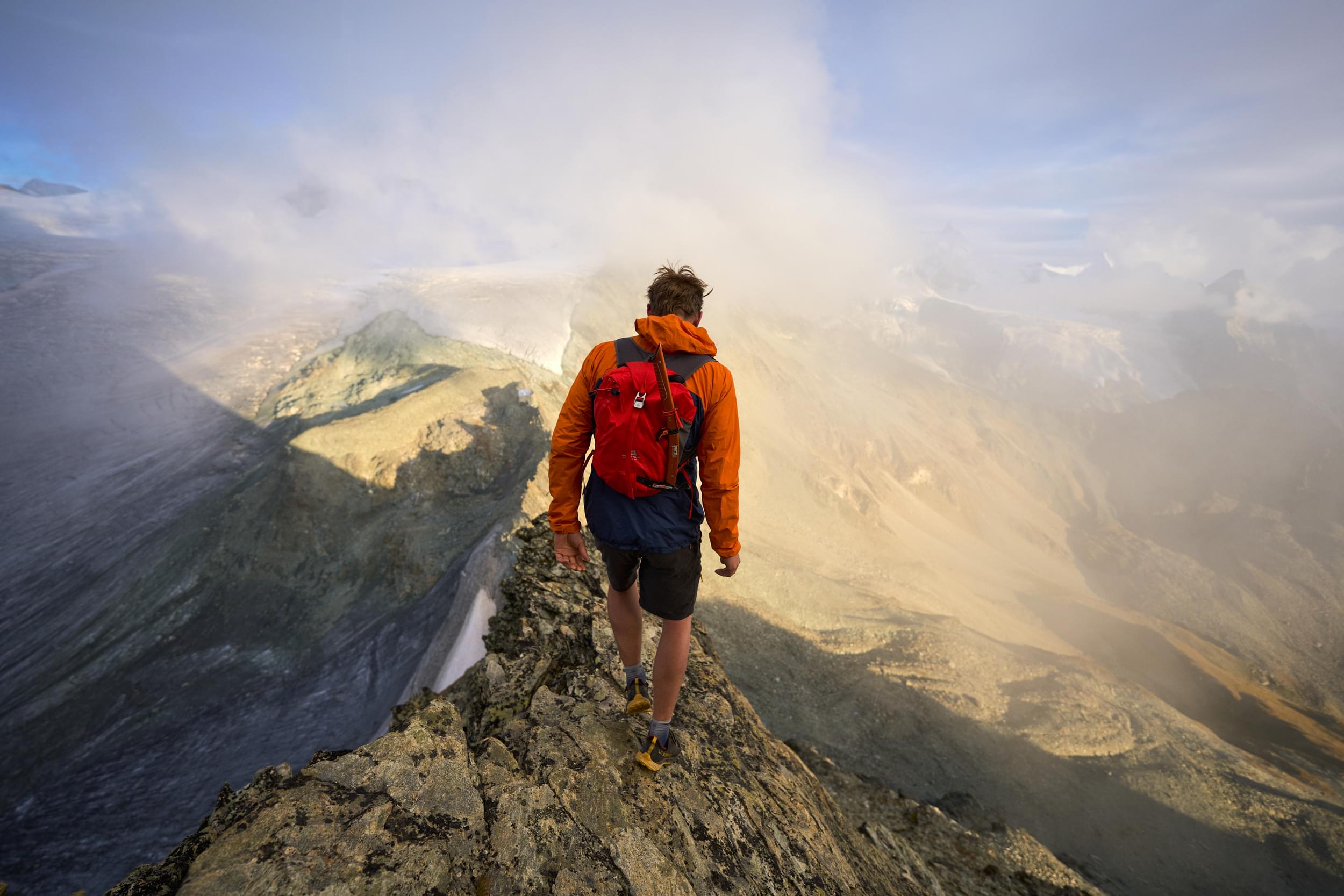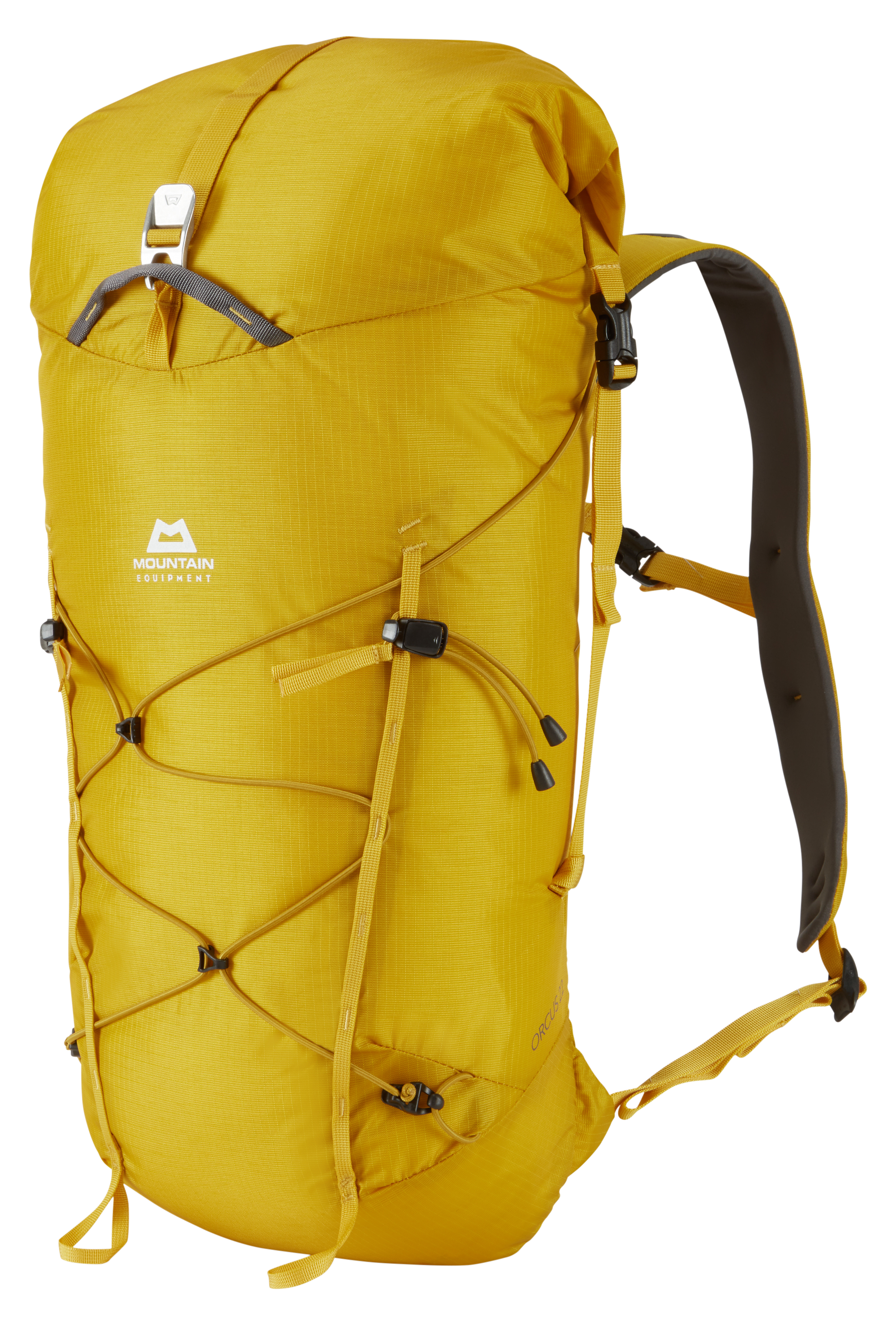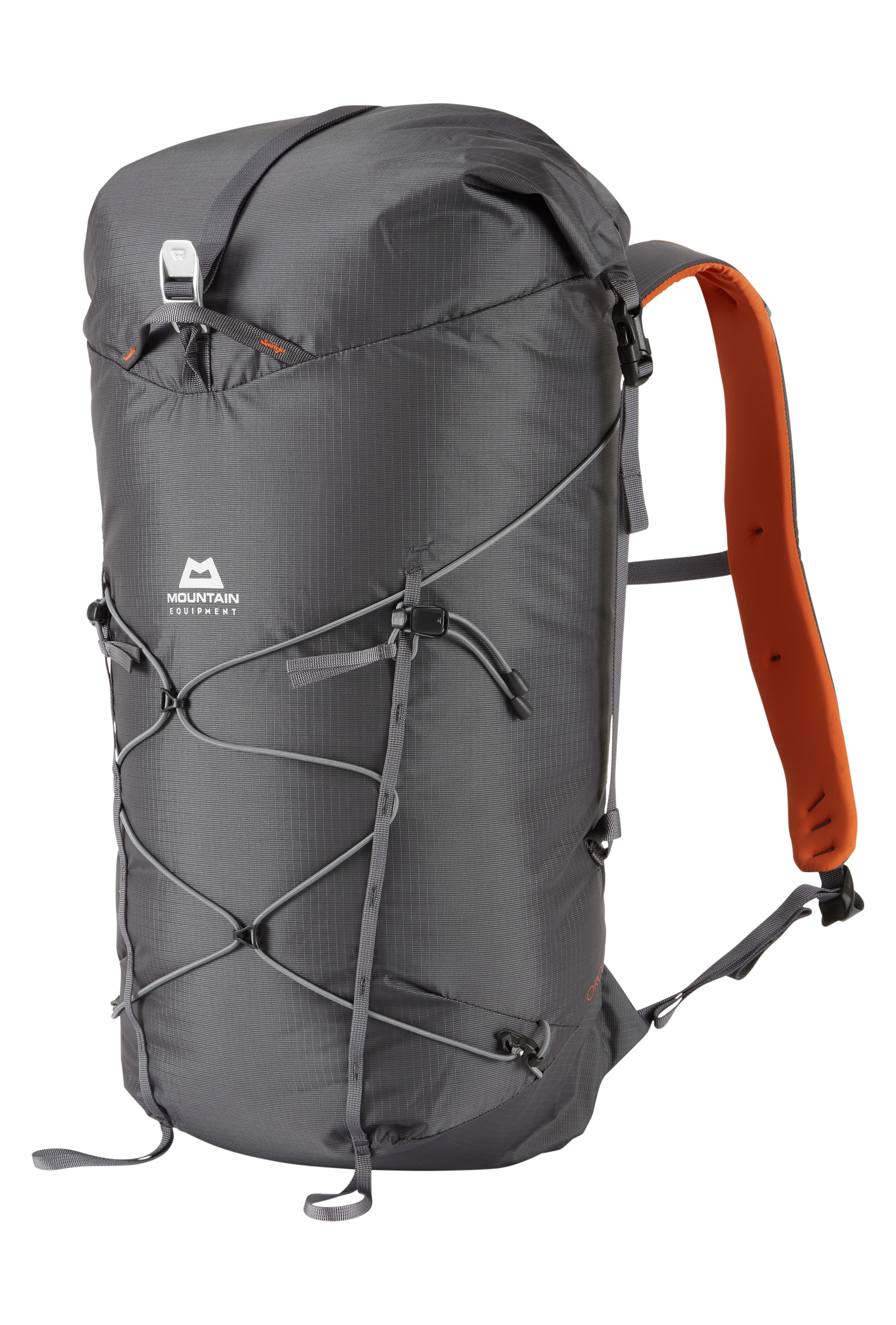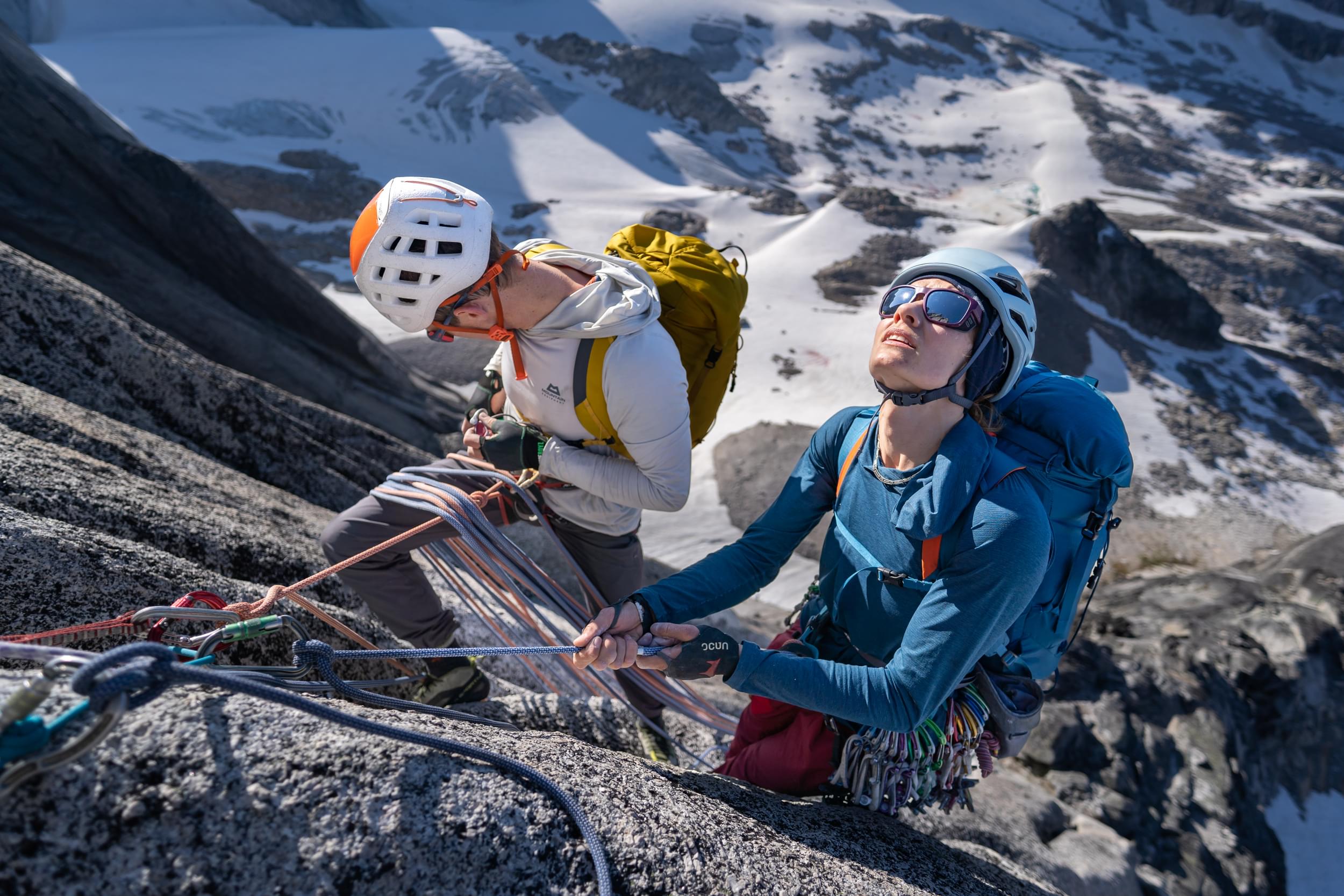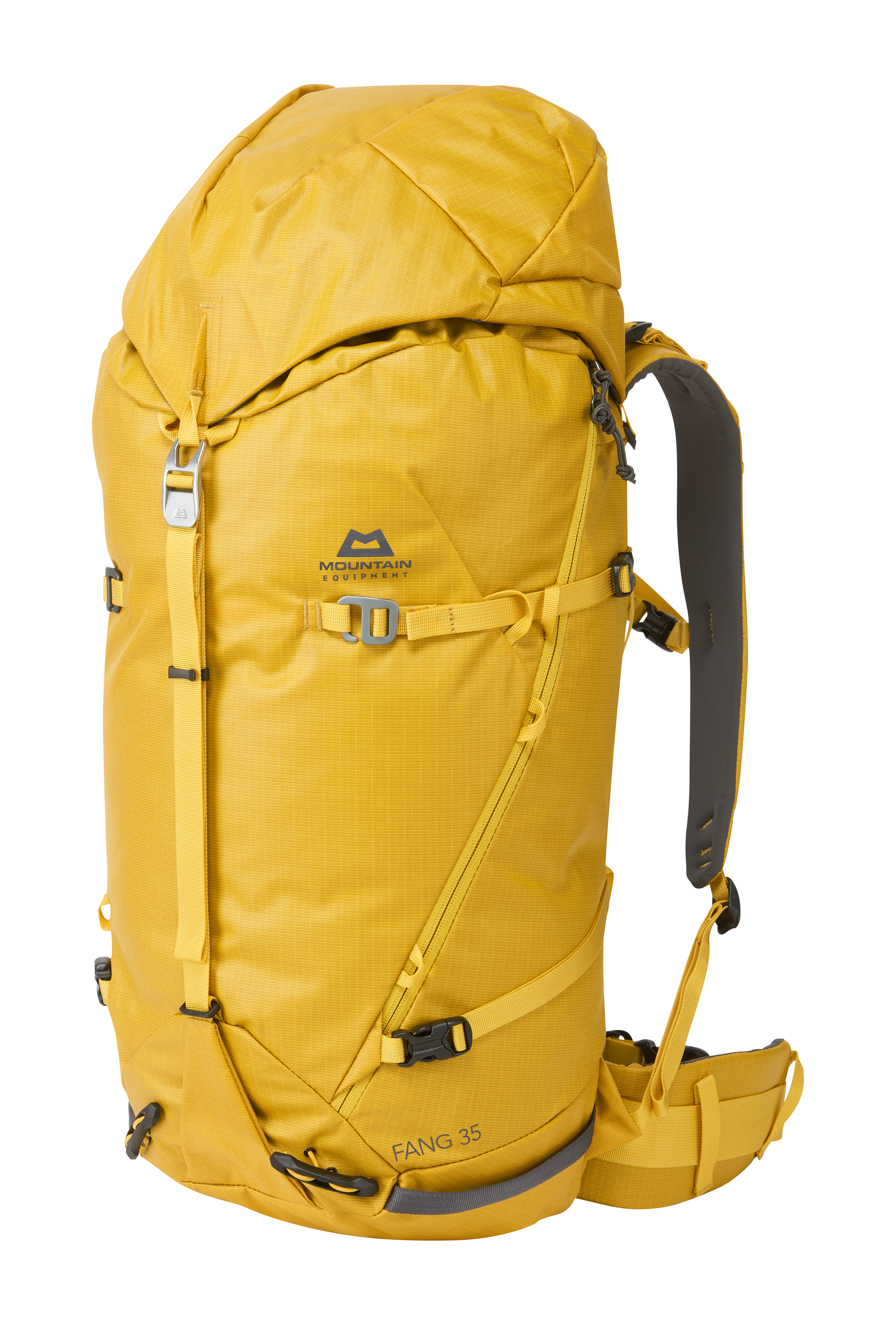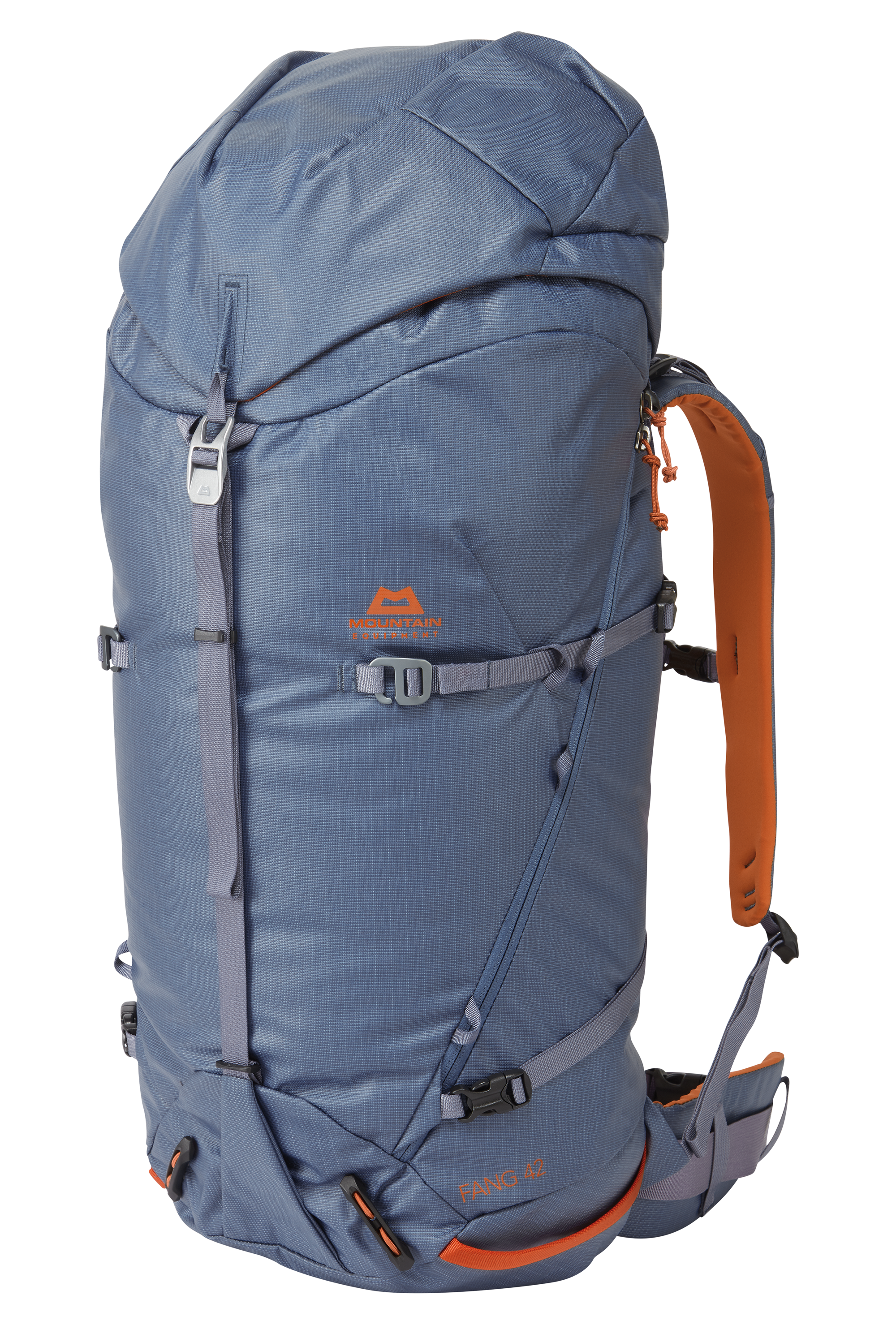How big a bag?
This is a key question to ask yourself when buying a pack: how big does it need to be? This will depend on how long you are going out for, how much kit you bring with you, how small that kit is, and whether you prefer a pack to be sized generously - allowing you to repack easily - or smaller so that it is neater and lighter. If you are going out in good weather then bulky items like ropes can be put on the outside of a pack, but in bad weather it is preferable to keep everything inside the pack. When comparing the volumes of packs from different brands ensure that you compare apples with apples: some will state a pack’s volume including all pockets and even stretchy external pockets, while others will state a volume which refers to the pack when it is completely full. Our packs’ volumes are measured according to an International Standard and are given for packs which are ‘optimally loaded’, as shown in our product photographs, and in reality they can usually carry a few more litres more than the volumes that we state.
Weights of packs
We list two weights for our backpacks – a normal weight and a stripped weight. The normal weight includes the weight of everything that the backpack comes with, including all of the fixings. The stripped weight is the minimum weight you can reasonably be expected to get to by removing items such as the back panel, hip fins, and compression straps. This is what we refer to as ‘on demand minimalism’. Obviously our packs can be made even lighter than their stripped weights, but those changes tend to be irreversible…
Unlike some brands we do not state maximum recommended weights to be carried in our packs. We know that in the real world any pack might end up carrying a huge amount of weight on a given day, and no matter which backpack you use, carrying 25kg for any serious length of time is going to be uncomfortable.
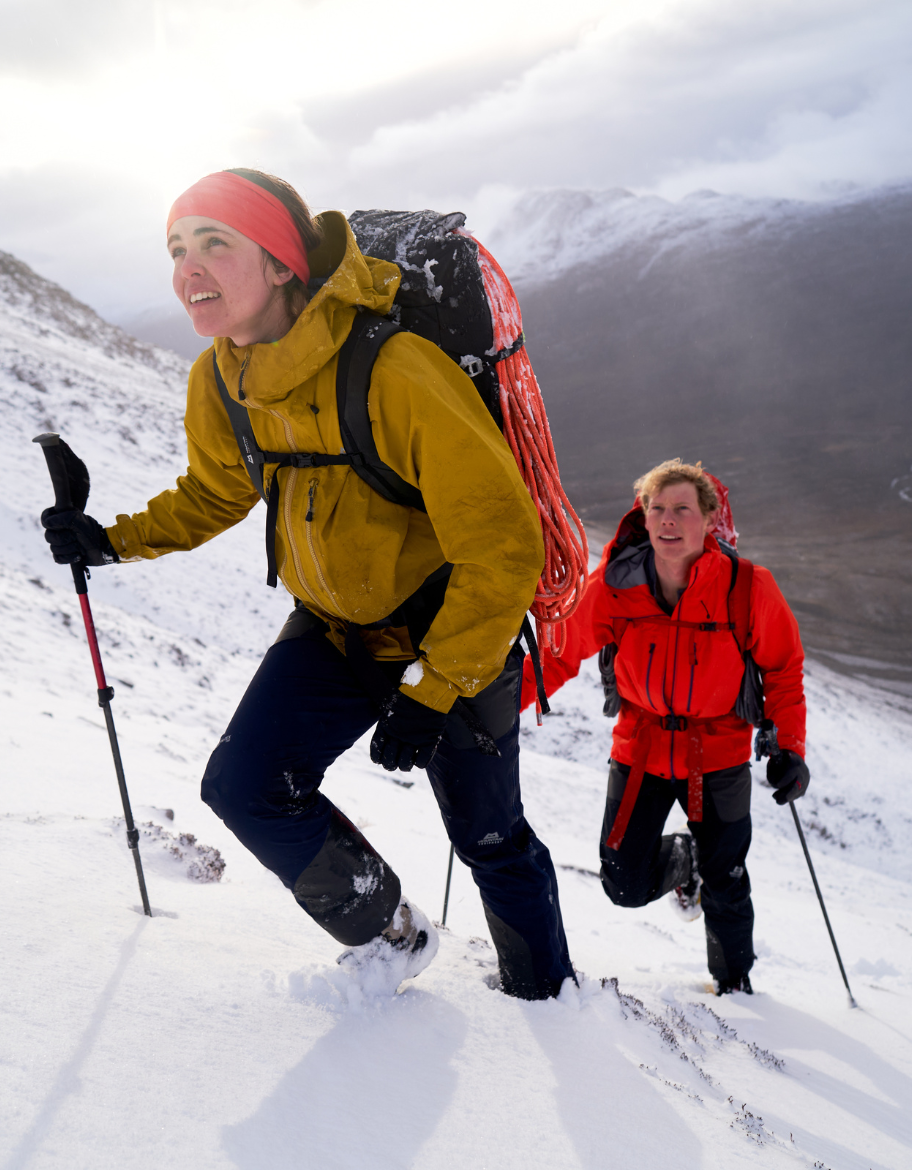
Fitting a pack
For packs smaller than approximately 25 litres fitting a pack isn’t that important, but for any larger packs or for those carrying big loads it is important that your pack fits you. The back length should be suitable for you, and it should hug your body so that it moves with you. To ensure a pack fits correctly you have to load the pack up, as an empty pack sits differently to a full one. With a loaded pack, ensure the hip belt sits on your hips, and then tighten the waist strap. Next adjust the shoulder straps to help stabilise the load. There should be no significant gaps between the shoulder straps and your body. Next, adjust the sternum strap and, where fitted, the load-lifters which attach the shoulder straps to the top of the pack’s back panel. When climbing, many people prefer to have a pack sit higher on their back where it does not interfere with a harness. In this situation the hipbelt is often clipped behind the pack and the shoulder straps tightened.
Backpack fabrics
Fabrics are absolutely essential to the performance of any pack. Packs have a hard life with UV light, abrasion, and tears all par for the course. However, the demands placed on a small lightweight pack are very different to those placed on an alpine climbing pack. The denier of a fabric is a good place to start when comparing fabrics, with a higher denier usually indicating a more durable fabric, though coatings can greatly affect strength too. Our pack fabrics have been painstakingly laboured over to ensure that they provide not only strength and durability, but weather resistance too.
Back systems
The back system of a pack impacts greatly on comfort. Self-fabric back systems are lightweight, quick drying and durable, but do not wick sweat as effectively as other options. Foam back panels are more effective at dealing with sweat but can cause snow to stick to them, and they are heavier than self-fabric options. Aerated ‘trampoline’ back systems help keep your back dry but cause the load to sit far away from you making them uncomfortable with heavy loads and they add a lot of bulk which makes them poorly suited to scrambling or climbing. Which you choose is largely down to what you plan to use the pack for and what attributes you prioritise.
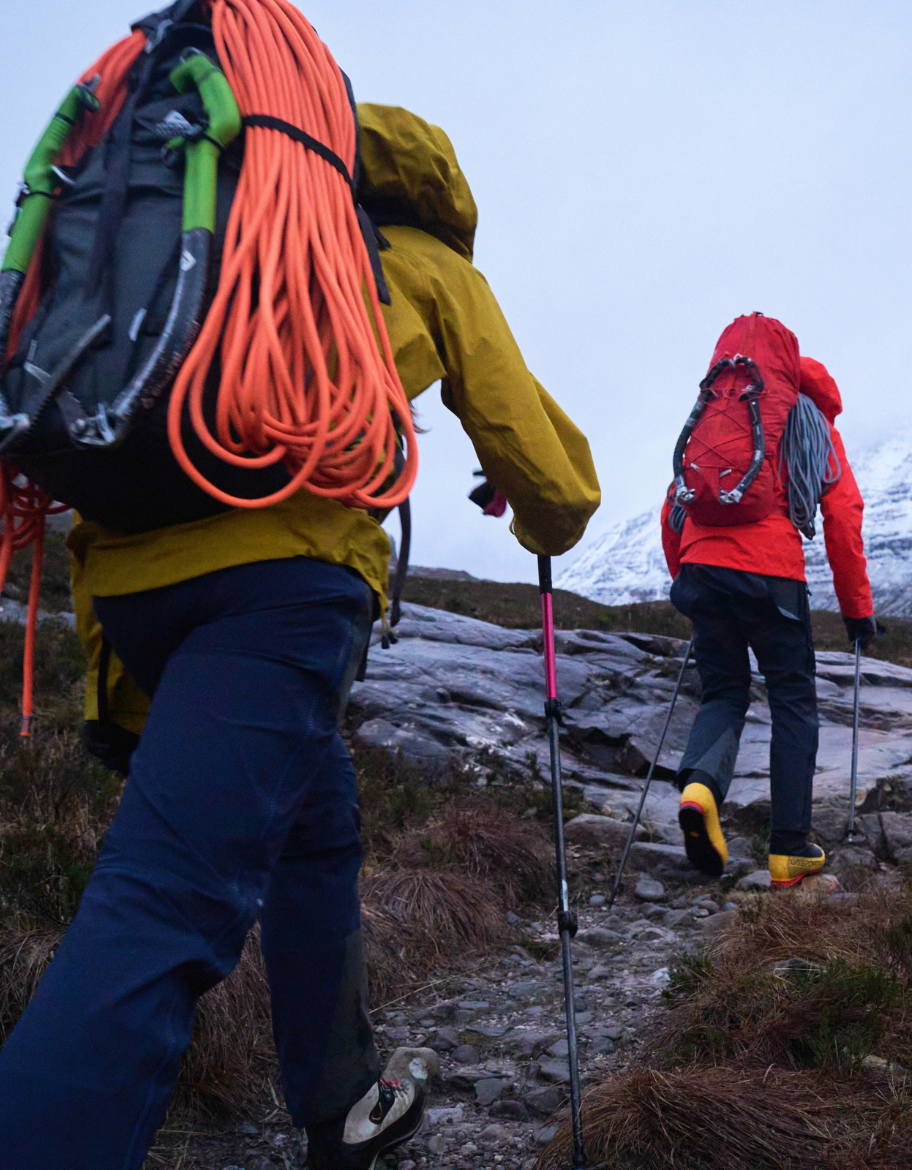
Weatherproofness
Very few backpacks are truly waterproof. Even with waterproof fabrics, seams will leak, and taping seams on a pack is expensive, rarely durable, and environmentally detrimental. Also, even a waterproof pack will get water in it when you open it or put wet or snowy things inside it. Finally, once the water gets in it is very difficult to get out (we know of numerous mountain guides who have deliberately put holes in the bottoms of their waterproof packs to allow water to drain from them). Raincovers are used on some packs to increase weather resistance, but these rarely keep all water out or stay in place, they inhibit getting into your bag, flap dangerously in the wind, get caught and snagged easily, and cannot be used if carrying an ice axe. They’re potentially useful in benign environments but don’t belong on a mountain.
We design all our packs to keep as much rain out as possible by keeping seams to a minimum and ensuring our closures are weatherproof, and packs such as our Tupilak series have waterproof fabrics, but in foul weather we still recommend that items which must be kept dry are kept inside waterproof drybags.
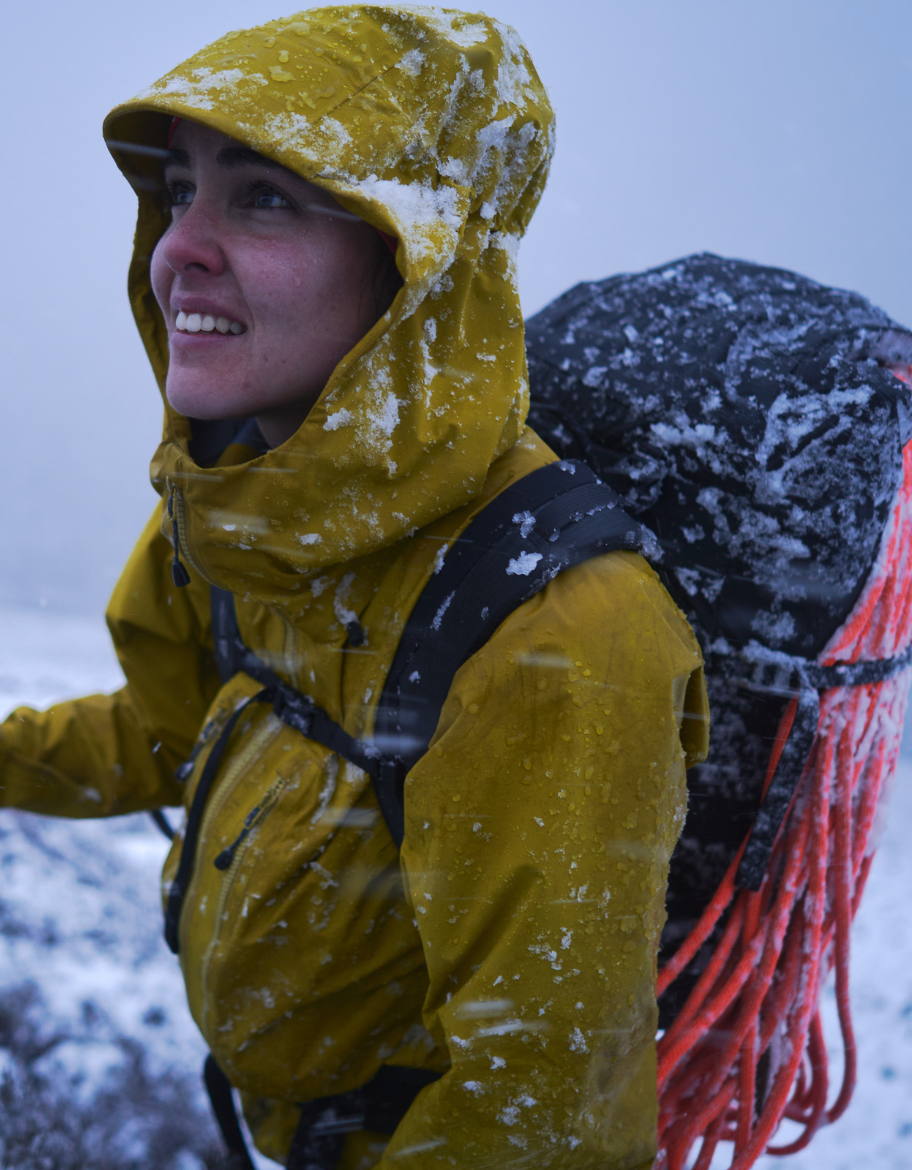
Carrying your kit
Getting a ‘system’ of what goes where in your pack takes practice, and blanket rules don’t tend to work for everyone. However, putting stuff that you are unlikely to need in the bottom of your is a great basic rule, as is keeping heavy stuff near to your back. Items like ropes which are heavy and bulky are usually best in the bottom too. Spare clothing should be kept in a drybag in all but fair weather. Having your food in one neat package might seem convenient, but in bad weather or on a fast-moving day it might be better to eat on the move and so having bits of food accessible is often the better way to go.
Ideally, most kit should go inside your pack if you intend to carry it for any length of time. But, items like skis, ice axes and some roll mats are of course better off stored on the outside of your pack. With a bit of ingenuity, most items can be carried on most packs, but using a pack designed to hold these items is far more likely to result in a stable and secure carry.
Lidded versus non-lidded packs
Lids on packs are not as common as they once were. A lid is good for keeping weather out, provides an obvious place for an accessible pocket, and stays accessible even when the rest of the pack is completely full. However, they add weight and bulk, they sag when the pack is empty, and alternative methods exist for keeping weather out of a pack or indeed keeping pockets accessible. Whether to choose a lidded pack or not is largely down to personal preference and you might find for certain uses you prefer the convenience of a lidded pack and for other uses you prefer the simplicity of a lidless pack.
Specific uses
It’s well worth considering what you intend to use the backpack for. Many packs are good all-rounders and can be used for most activities, but some uses require certain attributes. For example, if going skiing, ensure that your pack will carry skis effectively and that it is durable enough to not be shredded by sharp ski edges. For winter climbing ensure that the pack is weatherproof enough and that it will carry ice axes effectively. For a pack that you intend to wear while rock climbing, ensure it is stable and allows full freedom of movement.
Duffle Bags
Duffels are a fantastic way to get lots of kit from A to B, and they can provide a mini-wardrobe as you live out of them. Indeed, the ‘duffel shuffle’ is practically a way of life for many of the people we work with. However, duffel bags are rarely comfortable to carry and frequently lack the features required for use on the mountain. They’re great for getting to the mountains, but once you’re there they’re best left in basecamp.
Hauling packs
If you’re climbing difficult terrain then hauling your pack up after you may be more efficient than trying to climb with it on. Our packs are equipped with haul loops but we recommend you haul a pack with as many straps linked as possible, to ensure maximum strength. If a pack gets snagged during hauling then enormous forces can be placed on the haul loops, and it is very wise to have fail-safes in place.
Discover the range
For Alpinists, Trekkers and travellers across the globe. Each of our packs or luggage pieces is carefully designed and crafted to give the optimum combination of weight, durability and performance. Allowing the user to get on with the job in hand.
Tupilak | Simply Functional
Developed over the course of more than 3 years and refined through more than 35 prototypes.
Every aspect of design and functionality has been individually tested and assessed by us, our pro partners and a hand-picked group of professional mountain guides.
Tupilak 14 Vest Pack
A technical vest pack for fast moving mountain days in all weathers and across the seasons; as stable and light as a running pack and as rugged and functional as a climbing pack.
Orcus
Dedicated lightweight climbing packs that excels on the fastest moving Alpine days as well as being an ideal choice for carrying essentials on the steepest lines.
Fang
A versatile all-round mountaineering pack, as at home while cragging as it is on big alpine faces. Tough and strippable, it can be used with or without its lid.


